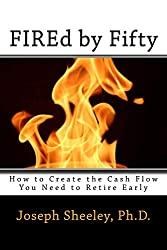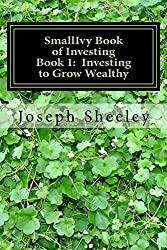
Photo by Dave Haas on Pexels.com
" data-orig-size="1880,1253" data-image-title="bicycle on snow covered street" data-orig-file="https://smallivy.files.wordpress.com/2018/08/pexels-photo-953626.jpeg" data-image-description="" data-image-meta="{"aperture":"0","credit":"","camera":"","caption":"","created_timestamp":"0","copyright":"","focal_length":"0","iso":"0","shutter_speed":"0","title":"","orientation":"0"}" data-medium-file="https://smallivy.files.wordpress.com/2018/08/pexels-photo-953626.jpeg?w=300" data-permalink="https://smallivy.com/2023/03/28/my-experiences-investing-in-a-start-up-part-3-the-long-winter/pexels-photo-953626/" alt="" class="wp-image-23221" data-large-file="https://smallivy.files.wordpress.com/2018/08/pexels-photo-953626.jpeg?w=723" />Photo by Dave Haas on Pexels.com(This is part 3 of the story. To find part one, go here.)
Spring Fling behind us, Bob and I both graduated and went our separate ways. I went off to UC Berkeley to pursue a Masters degree in Mechanical Engineering. Bob moved up to Phoenix and continued to build his company. At that point, the company was known as Ferris Productions.
I put the stock certificate for my two shares of Ferris Productions into my safe deposit box and continued on through grad school. Each year I would get a 1099-S form for my taxes. (Because it was an S-corporation, each of the shareholders would file their share of the profits or losses on their taxes.) Each year there was a loss, so I had no need to worry about paying taxes.
(Note, if you click on a link in this post and buy something from Amazon (even if you buy something different from where the link takes you), The Small Investor will receive a small commission from your purchase. This costs you nothing extra and is the way that we at The Small Investor are repaid for our hard work, bringing you this great content. It is a win-win for both of us since it keeps great advice coming to you (for free) and helps put food on the table for us. If you don’t want to buy something from Amazon or buy a book, how about at least telling your friends and family about our website as a great place to learn about investing and personal finance. Thanks!

While at Berkeley I continued investing and using money from my portfolio to cover living expenses. My salary had gone up significantly from what I was getting as an undergraduate lab assistant at the University of Arizona. There I was getting about $400 per month, where at Berkeley as a graduate student researcher I was making about $1500 per month during the school year and around $3000 per month during the summers. Unfortunately, they paid me monthly, meaning I had a big check. My first paycheck I cashed and then had the uneasy experience of walking through downtown Berkeley with $1500 in my pocket. After that, I started sending the checks into my brokerage account and withdrawing the cash I needed from ATMs.
Despite my additional income, Berkeley was really expensive and I started seeing the value of my portfolio decline. Everything just cost a lot, from rent, to food, to car insurance, to books. Luckily, my tuition was covered through a department scholarship the first year and then by the NASA grants I was working on as a grad student. The exception was the one semester between my Masters and Ph.D. program where the first project I was working on had finished and it took a while to get a second one in place. That semester, in addition to not getting paid for a few months, I discovered that I owed about $8,000 in tuition!

Check out my new book on how to supercharge your finances, FIREd by Fifty: How to Create the Cash Flow You Need to Retire Early
I would also call Bob once per year, usually around Christmas time, and ask him how things were going. He would give me a little information about things the company was doing, always seeming optimistic. Sort of like the Cubs, it was always “next year” when things would gel and we’d start to strike it big.
While I was expecting to see the company opening a set of virtual reality experience game center, Bob’s vision was to build virtual reality systems and sell them. He had visions of places buying systems from him and setting up virtual reality centers, architects using systems to show clients what a home they had designed would look like with a virtual walk-through, and medical schools using virtual reality surgeries to train new doctors. Ferris Productions would get a sale every now and then, but the costs of marketing and developing the system always exceeded any income made. I did see at one point that Ferris Productions installed virtual reality centers at a Six Flags park and had employees at the park, but the exhibit never really seemed to take off and they eventually abandoned it.
Each year after we had talked I would tell Bob that one day I would call and someone else would answer the phone. At that point, I would know that he had made it.

Want all the details on using Investing to grow financially Independent? Try The SmallIvy Book of Investing.
After I graduated from UC Berkeley with a Ph.D., I spent about ten months looking for and eventually getting a full-time job. During that time I continued to work in a freelance basis, helping a company across the bay that made study exams for the EIT (Engineer-In-Training) exam, which is now known as the Fundamentals of Engineering. My wife was working as a physician’s recruiter’s assistant in Oakland and paying the majority of the expenses with her job.
During that time I had several interesting interviews. One was with Aerospace Corporation down in LA, a firm that has a ridiculously smart staff that helps government agencies and primes with their really difficult problems. Another was with Los Alamos National Lab. Some memories that I had from that visit were:
- Getting a full-sized car, which turned out to be a full-sized pick-up truck with a plastic bed cover that served as a trunk. There I was, driving across the high desert from Albuquerque to the plateau on which Los Alamos sits in this huge truck.
- It rained like crazy that night, and the only place open in Los Alamos was Sonic, the hamburger drive-in. That was the first time I had ever visited one and I tried to get out and go inside before I found out you order from your car. Today I have done very well investing in Sonic Corporation.
- I arrived at the lab the day the Wen-Ho Lee spy scandal broke, so there were all sorts of news crews in front of the lab filming. My host for the interview said that it was usually not that exciting there.
- The guys who worked at the lab had radiation detectors that they wore and turned in periodically to see if they had been exposed to excessive radiation.
- I gave a presentation in a part of the lab that was restricted, largely because it was an open conference room. Later that day I had an interview with a Ukrainian who worked at the lab. He asked me to give him some info on my presentation because he said, in his thick, eastern-European accident that he would have attended the talk, but “they would have shot me.”
Once I finally received a job offer, we packed up the car and headed out to Tennessee, a state I had never visited before I went out for an interview. It was shortly after we arrived in Tennessee that I called Bob to see how things had gone during the year. (This was late fall of 1999, just before the big millennial.) This time, someone else picked up the phone.
To Be Continued….
Have a burning investing question you’d like answered? Please send to [email protected] or leave in a comment.
Follow on Twitter to get news about new articles. @SmalllIvy
Disclaimer: This blog is not meant to give financial planning or tax advice. It gives general information on investment strategy, picking stocks, and generally managing money to build wealth. It is not a solicitation to buy or sell stocks or any security. Financial planning advice should be sought from a certified financial planner, which the author is not. Tax advice should be sought from a CPA. All investments involve risk and the reader as urged to consider risks carefully and seek the advice of experts if needed before investing.
